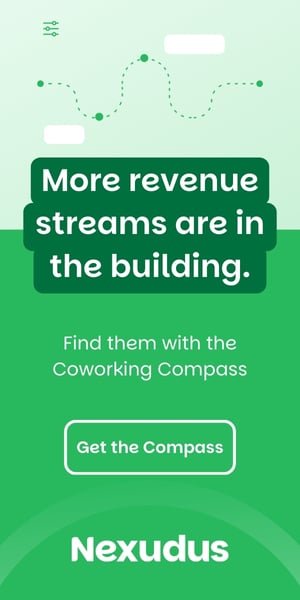- More than 70% of all large companies, and 90% of Fortune 500 companies, offer some kind of employee assistance program (EAP).
- EAPs provide rapid and near real-time support for a broad number of needs including mental health, substance abuse, stress, family issues and even legal advice.
- By introducing an EAP into the workplace, employers can help address the stigma of discussing mental health and addiction issues in the workplace, while giving workers a safe, confidential space to tackle their issues.
The value of workplace benefits cannot be underestimated for workers. They’re key for companies, too. Retention, morale, and productivity all go up when your workforce is happy and healthy — physically and mentally. Employers know this, and many are finding ways to go beyond healthcare basics.
More than 70% of all large companies, and 90% of Fortune 500 companies, offer some kind of employee assistance program (EAP).
While EAPs are clearly a common offering, many employees aren’t even aware they exist. If they do know their company provides an EAP, it’s unlikely they understand the extent of the services that are included and how to access them.
This lack of understanding can lead to employees suffering in silence — while their health, productivity, and motivation deteriorate — without realizing they can get help, for free.
But where do employees start? Here’s how workers can begin to understand exactly what an EAP is, everything these programs entail and the benefits that come with using these services.
What is an EAP?
According to The U.S. Office of Personnel Management (OPM), EAPs provide employees with support and guidance with mental health and other personal problems, such as substance abuse, stress, grief, work relationships, and even family issues such as elder care resources.
EAPs can even include legal advice for basic items such as wills, contracts, landlord/tenant disputes and family law issues such as adoption, child support and divorce.
EAPs focus on what traditional health plans don’t: the impact that mental health and other personal challenges can have on a workers’ role.
“EAPs are effective at providing rapid and near real-time support for a broad number of support needs including mental health assistance,” explains Wally Gomaa, co-founder of SimplePay Health, a healthcare marketplace. “Given the access issues in the United States for mental healthcare providers, coupled with the increased demand, EAPs can be an important component in the overall benefits strategy.”
The benefits of an EAP
Access to health and wellness benefits can no longer be overlooked or underestimated — and the true value within an EAP comes from the fact that it offers employees help when they need it most: Most plans include 24/7 confidential hotline.
Substance abuse impacts one out of every 11 U.S. workers, according to analysis from the National Safety Council, which subsequently leads to a sense of shame that prevents them from seeking help.
Without the proper care, substance abuse and mental health problems can begin to interfere with social, occupational and family dynamics.
By introducing an EAP into the workplace, employers can help address the stigma of discussing mental health and addiction issues, while giving workers a safe space to tackle their issues.
Even more, EAPs address the invading fear that Americans have when it comes to receiving any sort of medical attention.
In fact, Gomaa says that one in five Americans haven’t seen a doctor in over five years. But with an EAP, workers can have access to preventive care, which can help their long-term healthcare costs.
They can also be a huge benefit to entire organizations by keeping staff happy and productive, rather than losing them to medical absences and mental health-related issues.
Getting the most out of an EAP
Support is within reach, but it might require a stretch toward HR to ask about the company’s EAP and how to access the benefits.
Employers have historically done little to help staff understand their overall benefits packages and the specific perks supplemental benefits like an EAP provide.
“People don’t use their benefits often enough to get good at it, and when they do use their benefits, it’s too confusing,” said Gomaa. “Only 4% of individuals can accurately define these four basic terms: deductible, coinsurance, copay, and out-of-pocket maximum. Benefit suppliers and HR professionals need to look for ways to simplify the structure of the benefits and use language that is easy to understand.”
Although leaders have a legal responsibility to abide by worker protection laws, they also have an ethical responsibility to help workers fully understand their rights and the benefits provided to them.
“The U.S. Department of Labor enforces over 180 worker protection laws related to pay requirements and various benefits. In addition, there is a wide range of state-specific regulations that help to support access to benefits that protect workers.”
Companies would be wise to bring experts into the office to provide guidance on how to utilize an EAP. This would encourage and enable workers to address challenges as soon as possible, protecting their own health and wellbeing, and by extension the overall health of the work environment.
Opening this line of communication means employees can ask questions and clarify any confusion, making workers are more likely to take advantage of these programs.


 Dr. Gleb Tsipursky – The Office Whisperer
Dr. Gleb Tsipursky – The Office Whisperer Nirit Cohen – WorkFutures
Nirit Cohen – WorkFutures Angela Howard – Culture Expert
Angela Howard – Culture Expert Drew Jones – Design & Innovation
Drew Jones – Design & Innovation Jonathan Price – CRE & Flex Expert
Jonathan Price – CRE & Flex Expert













